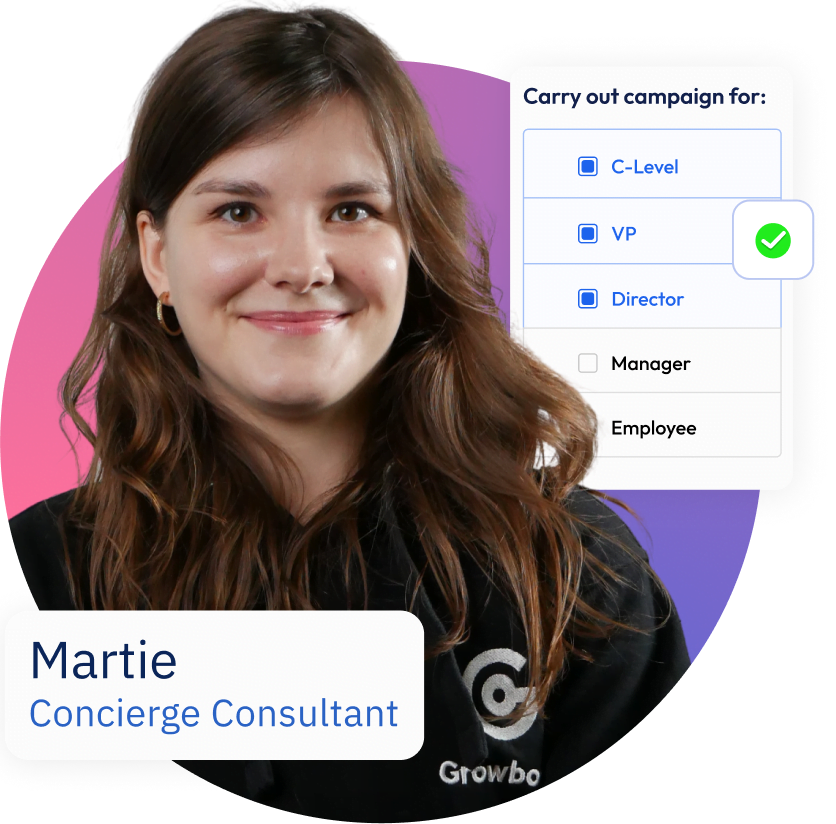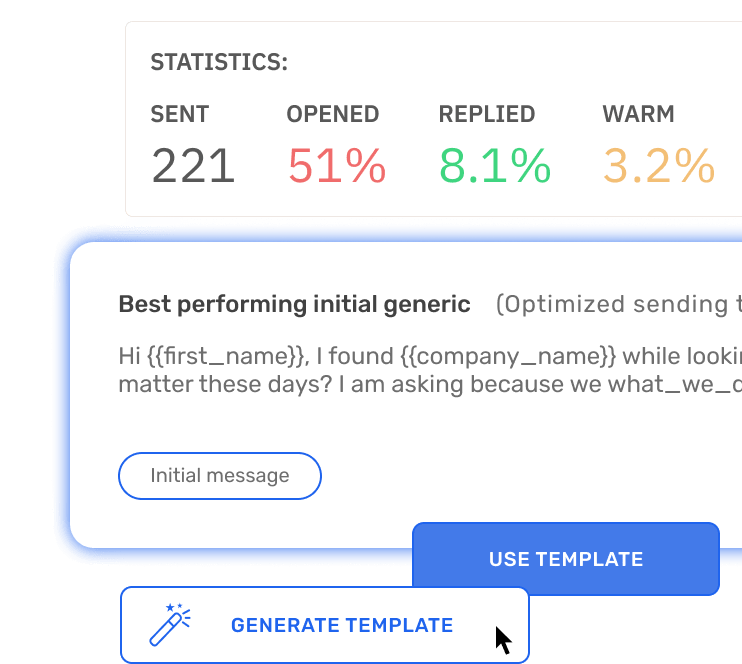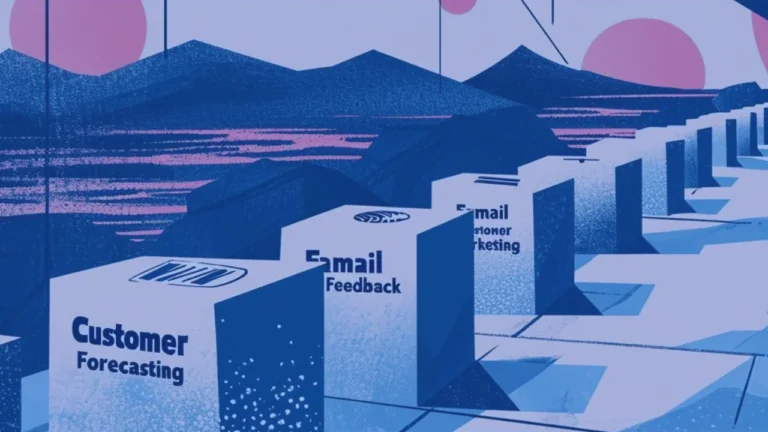TL;DR
- Networking emails are vital for professional engagement and career development. They are nuanced and play a crucial role in building professional relationships.
- Crafting an effective networking email involves several key elements: a captivating subject line, a personalized greeting, a concise purpose, and a respectful tone.
- The strategic timing of sending networking emails is essential. Best times include mid-week mornings and avoiding weekends, holidays, and industry-specific peak times.
- Research before writing a networking email is crucial. Insights about the recipient’s interests, work, and achievements can lead to more personalized and compelling content.
- Subject lines should be attention-grabbing and relevant to the recipient’s interests to increase the chances of a response, avoiding caps lock or excessive punctuation.
- Networking emails should be brief and direct to accommodate the rapid pace of professional environments, using bullet points or numbered lists for clarity.
- The email’s introduction should captivate the recipient with a confident and context-rich presentation, mentioning mutual connections or experiences.
- The core message must be clear, focused, and relevant to the recipient, providing a rationale for engagement and avoiding redundancy.
- A well-constructed conclusion should express gratitude, reiterate the intent, and include a call-to-action, leaving a positive and polite last impression.
- A follow-up strategy is key, as consistent timing and messaging can lead to engagement if the initial email does not receive a response.
- Networking emails should offer value to the recipient and propose a two-way benefit, including sharing insights or connections.
- Emotional language, when used in balance with professionalism, can strengthen networking emails by adding empathy, sincerity, and enthusiasm.
- Avoid common mistakes such as non-specific greetings, vague intents, or impersonal sign-offs, and ensure emails are personalized and clear.
- Different types of networking emails cater to varied objectives, such as establishing fresh contacts, following up after events, or connecting with industry leaders.
- Effective networking emails combine personalization, timing, brevity, and professionalism, and they are seen as building blocks for long-term relationships, not just transactions.
- To enhance your networking email strategy with advanced analytics and optimization, consider signing up for a Growbots trial.
leave no lead unexplored
Every potential client within reach
- 180m+ contacts
- CRM integrations
- 23 Prospect filters
- 15 Company filters
The Basics of Networking Emails
A well-constructed networking email serves as an introduction, an invitation to engage, and a reflection of one’s professionalism. The primary objective is to establish a connection—be it for seeking advice, exploring job opportunities, or building a partnership. These emails must be purpose-driven, succinct, and respectful, always acknowledging the recipient’s time and expertise.Key elements of an effective networking email include:- A clear subject line that piques interest
- A personalized greeting that demonstrates familiarity
- A concise purpose for the outreach
- A polite tone that conveys respect and enthusiasm
Networking Email: Use Cases
Networking emails are the digital keys to opening doors in almost any professional scenario. They can be a powerful catalyst for career growth, insightful exchanges, and collaborative opportunities. Here’s when to effectively deploy this tool in your communications arsenal:Scenarios For Networking Emails:
- Following up post-networking events or conferences
- Initiating conversations with potential employers or collaborators
- Seeking advice or mentorship in your professional field
- Cultivating partnerships or business relations
When to Send a Networking Email
Strategic timing is pivotal in ensuring your email not only reaches the inbox but gets opened. Business hours, industry peculiarities, and even your recipient’s time zone can affect the success of your networking emails. For example, studies indicate that Tuesdays see a higher open rate for emails, suggesting the beginning of the workweek might be the best time for your outreach.Optimal Timing Considerations:
- Industry-specific peak moments
- Holidays and observance days common to the recipient’s region
- Post-event follow-ups to maintain the momentum of face-to-face connections
| Factor | Description | Suggested Action |
| Day of the Week | Emails sent mid-week (Tuesday to Thursday) tend to have higher open rates. | Schedule your emails for these days to increase the likelihood of them being read. |
| Time of Day | Sending emails early in the workday often results in better engagement. | Aim for sending emails between 8 AM and 10 AM in the recipient’s time zone. |
| Post-Event | Networking emails are most effective when sent soon after an event while the interaction is still fresh. | Send a follow-up email within 24 to 48 hours post-event. |
| Industry Peak Times | Avoid times when your recipient is likely to be busiest, such as financial year-ends for accountants. | Research industry-specific peak times and steer clear of sending emails during these periods. |
| Vacations and Holidays | Emailing during major holidays or vacation seasons may result in lower open rates. | Be cognizant of holiday seasons and schedule emails well before or after these times. |
| Weekends | Professionals are less likely to check or respond to emails over the weekend. | Steer clear of sending emails on weekends unless you have a good reason to believe it’s the best timing for the recipient. |
How to Write a Successful Networking Email
A thoughtful and well-composed networking email could be the difference between a missed opportunity and a fruitful connection. Here are a couple of steps on how to write one that stands out:Do Your Research
Research Tips For A Personalized Email:
- Visit the recipient’s LinkedIn profile for recent updates or shared connections.
- Read their recent publications for talking points.
- Understand their company’s milestones to acknowledge in your outreach.
2. Write an Attention-Grabbing Email Subject Line
Your email’s subject line is its first impression. It determines whether your networking attempt will be overlooked or given a moment’s consideration.Effective Email Subject Line Examples:
| Intent | Subject Line |
| Introduction | “Eager to discuss your insights on renewable energy” |
| Collaboration | “Exploring a joint venture in tech innovation” |
| Mentorship | “Seeking your expertise in biotech advancements” |
- Do keep it brief and punchy
- Do not use caps lock or excessive punctuation
- Do tailor it to the recipient’s interests or industry
3. Keeping Your Email Brief and To The Point
Conveying your message concisely is more than a courtesy—it’s a necessity in today’s rapid-paced professional environment. Long-winded emails risk being skimmed or ignored entirely. Aim to communicate the crux of your message within a few sentences, ensuring your intentions are immediately clear to the recipient.Effective strategies for brevity include:- Focusing on the key message without unnecessary details
- Using bullet points or numbered lists for clarity
- Prioritizing clear, direct language over jargon
3. Starting Your Email
The opening of your networking email is your first impression—an opportunity to captivate and engage. Introduce yourself with confidence and context, highlighting any connection points that might resonate with the recipient. This personalized approach reflects attention to detail and sincerity.Consider these tips for beginning your email:- Mention any mutual contacts or shared experiences
- State your reason for reaching out promptly and directly
- Convey genuine enthusiasm for the opportunity to connect
4. The Core of Your Message
Delivering your central message with clarity is of paramount importance. Consider the recipient’s perspective—what information do they need to know, and what might motivate them to respond? Your message should be relevant to their interests and offer a clear rationale for why they should invest their time in you. To maintain focus, every sentence should add value to the proposition, avoiding redundancy.For example:“In light of extensive experience in renewable energy investments, I’m looking for guidance on navigating the venture capital landscape for a startup focused on sustainable energy solutions.”Reach More with Less Effort
Connect with Potential Clients at scale
- AI message generator
- E-mail verification
- Multichannel sequences
- A/B testing
5. Crafting the Perfect Conclusion to Your Networking Email
A well-crafted conclusion in your networking email can leave a lasting impression and encourage a positive response. Ensure to thank the recipient for their time, reiterate your key message, and end with a neat sign-off that includes a gentle prompt for them to take action.Elements of an Effective Email Conclusion:
- Gratitude: “Thank you for considering my request.”
- Recap of Intent: “I am keen on discussing the potential collaboration mentioned.”
- Call-to-Action: “Could we set up a time next week for a brief chat?”
- Personalized Sign-off: “Best wishes, [Your Full Name], [Your Position, Company]”
6. Following Up
Your initial email may not always get a response, but that doesn’t mean the door is closed. Following up is an art—it requires timing, tact, and a touch of persistence.Table: Timing and Action for Follow-Up Emails
| Timing | Action |
| 1 Week Later | Send a polite reminder referencing the previous email. |
| 2-3 Weeks Later | Follow up with an additional piece of information or query. |
| 1 Month Later | Attempt a different approach or offer additional value. |
Advanced strategies for email networking
Offering Value
A networking email should articulate needs while emphasizing what can be contributed. By establishing a two-way street, the chance of a favorable reply increases. Offering value can be through sharing insights on recent industry developments, connecting the recipient with contacts, or providing feedback on their work—anything that enriches the recipient’s professional life.Example:| Section of Email | How to Offer Value |
| Opening | “Having followed your work on…, I believe that…” |
| Body | “In exchange for your guidance, I can offer my insights on…” |
| Closing | “I am looking forward to potentially collaborating on…” |
Using Emotional Language
Employing a touch of emotional language can help you establish a connection on a more human level. While professionalism should always be maintained, displaying empathy and genuine interest can make your message more impactful. It’s about striking the right balance between being relatable and maintaining a professional demeanor.Consider these aspects when using emotional language:- Empathy: Acknowledge the recipient’s busy schedule or achievements.
- Sincerity: Express honest appreciation for their time and any insights they may provide.
- Enthusiasm: Show excitement about the prospect of connecting and learning from them.
Mention The Similarities
Establishing common ground creates an instant connection. Highlight shared experiences, mutual acquaintances, or aligned interests to build rapport quickly.Good Factors to Mention:- Alma mater
- Professional associations or networks
- Shared hobbies or interests relevant to your industry
Use Praise
Sincere commendation can serve as an excellent icebreaker. Whether it’s a recent publication, a milestone achievement, or an impressive project, acknowledging these accomplishments conveys respect and admiration. Some examples include:- “I was greatly impressed by your keynote on X at Conference Y.”
- “Congratulations on your company’s recent accolade in Z.”
Offer Your Help
Networking is as much about what you can offer as what you can gain. Clearly articulate any skills, resources, or connections you’re willing to share. In order to do so, you can:- Offer to share insights from your latest research that might be relevant to their work.
- Propose to connect them with someone in your network for mutual benefit.
- Suggest collaborating on a project where your expertise complements theirs.
Mention a Mutual Contact
When you’re introduced to someone through mutual contact, it’s important to mention this connection right away as it helps to establish trust. Be sure to get permission from the mutual contact before dropping their name in your email. This approach can lend credibility to your outreach and make the recipient more receptive to your message.Guidance for name-dropping a mutual contact:- Acknowledge the mutual contact in the subject line or opening line.
- Briefly explain how you know the mutual contact.
- Express gratitude for the introduction.
What to Avoid in Networking Emails
Even the most experienced professionals can fall into the trap of sending networking emails that miss the mark. Common errors include using generic language, failing to personalize, or being unclear about the intention of the outreach.Examples of bad practices in networking emails and how to fix them:| Common Error | Example | How to Fix |
| Non-specific greeting | “Dear Sir/Madam,” | Use the recipient’s name: “Dear [Name],” |
| Vague intent | “I thought it might be good to connect.” | Specify your interest: “I’m reaching out to discuss how we might collaborate on [specific project or interest].” |
| Impersonal sign-off | “Best,” | Add a personal touch: “Looking forward to potentially working together, [Your Name]” |
- Overuse someone’s attention without offering value in return.
- Forget to follow up, which might suggest lack of genuine interest.
- Inadvertently cross lines of professionalism by being too casual or too pushy.
Types of Networking Emails
Emails can play different roles in terms of networking. Below we dive into the most common types:Networking Email to a Stranger
This type of email aims to open a line of communication based on mutual professional interests or goals, without prior personal acquaintance. The sender must carefully articulate why they are reaching out to this specific individual, often by mentioning shared industries, admiration for the recipient’s accomplishments, or a particular aspect of their work that sparked interest. The ultimate objective is to foster a dialogue that could lead to mentorship, advice, potential job opportunities, partnerships, or expanding one’s professional network. It’s about laying the groundwork for a relationship that is beneficial to both parties, characterized by a respectful and value-driven approach.| Goal | Description |
| Introduction | To introduce yourself and establish a new professional connection without prior acquaintance. |
| Express Interest | To express genuine interest in the recipient’s work, achievements, or industry. |
| Seek Advice or Insight | To request guidance, advice, or insight from the recipient based on their expertise or experience. |
| Explore Collaboration | To propose potential collaboration opportunities that could be mutually beneficial. |
| Expand Professional Network | To broaden your professional network by adding connections from relevant fields or industries. |
| Request Mentorship | To seek mentorship opportunities from someone you admire and believe can help guide your career or projects. |
| Share Information or Resources | To offer valuable information, resources, or connections that might interest the recipient. |
| Initiate a Dialogue | To start a conversation that could lead to meaningful exchanges, partnerships, or learning opportunities. |
| Establish a Future Contact Point | To create a point of contact for future communications, collaborations, or information sharing. |
- Reference their work or contributions to the industry.
- Mention any research or reading you’ve done on their company or sector.
Follow-Up Networking Email after Event
A follow-up email after a networking event is a critical step in solidifying new connections and maintaining the momentum of in-person meetings or virtual interactions. The primary goal of such an email is to reinforce the connection established during the networking event, express appreciation for the conversation, and set the stage for future engagement. This type of communication serves several purposes:- It reminds the recipient of who you are, referencing specific discussions or points of interest from your meeting to jog their memory and personalize the message.
- It shows gratitude for the recipient’s time and insight during the event, fostering goodwill and a positive impression.
- It proposes a way to continue the dialogue, whether through a meeting, phone call, or another form of communication, indicating your interest in deepening the relationship.
- If during your conversation, you mentioned any resources, articles, or contacts that could be of interest, the follow-up email is a perfect opportunity to share those, adding value to the recipient.
- It often includes a call to action, suggesting a next step in the relationship, such as a one-on-one meeting, a request for advice or mentorship, or collaboration on a project.
- It reinforces the personal connection made during the networking event, using a polite and professional tone to leave a lasting positive impression.
Thank You Email After Networking
Another form of a follow-up email after networking is a thank you email.It not only reflects good manners but also reinforces your interest in the new connection. It’s critical to send this promptly, ideally within 24 hours of the interaction. Make sure to mention a topic you discussed or something you learned from them, as this will personalize your message and remind them of your conversation.| Components | Example |
| Appreciation | “It was a pleasure meeting you at [Event Name] yesterday…” |
| Personalized Mention | “…your insights on [Topic] were immensely enlightening to me.” |
| Continuity | “I look forward to exploring ways we can collaborate on…” |
| Closing | “Thank you once again for your time, and I hope to keep in touch.” |
Networking Email to an Industry Leader
A networking email to an industry leader is a strategic communication aimed at establishing a connection with a highly respected and influential professional within your field. The primary goals and considerations of such an email include:| Goal | Description |
| Professional Introduction | To succinctly introduce yourself and highlight relevant achievements or commonalities. |
| Express Admiration and Respect | To acknowledge the recipient’s contributions to the industry and express genuine admiration. |
| Seek Guidance or Mentorship | To request advice, insights, or mentorship from an experienced and respected professional. |
| Propose Collaboration | To explore potential collaboration opportunities where mutual benefits could be realized. |
| Expand Professional Network | To broaden your professional network through a connection with a well-respected industry leader. |
- Highlight common values or passions.
- Articulate how their work has impacted you.
- Suggest specific topics for discussion that align with their expertise.
Networking Emails Templates
Networking Email Template for Finding Partners
Initial email
{{first_name}}, I assume you sometimes use external support on projects requiring advanced technological solutions. I am curious if the list of your tech partners is closed, or are you perhaps looking for someone new?
I am asking because we would like to offer collaboration between our teams – We are a team of developers who want to help your creative minds focus on what they do best – designing and creating brilliant user experiences.
Our experience ranges from working with top US consulting companies (Example1, example2) to small PR / Marketing agencies where we have built exciting digital campaigns and developed web and mobile apps.
Are you open to connecting and learning more about how we can empower your team?
1st follow up
{{first_name}}, just checking in following my last email. Would it be helpful for us to talk directly to your development team?
We hinge most of our work between creative and IT teams. We speak both marketing and tech, and can also provide a full-on IT solution – maintaining a high standard of best practices.
Maybe we could be of help to your team? Let us know!
2nd follow up
{{first_name}}, given that I haven’t had a response to my previous emails, I assume that you don’t need any assistance with your technical development. I won’t keep pestering you!
However, I understand that you’ve got a lot going on and might just be too busy to reply, or that the timing might not be right, so I’ll leave you with a quick sentence about us:
Our mission is to bridge the gap between creative teams and technology. Our experience comes from collaboration with business services and consulting companies where we have delivered projects using numerous web content management platforms.
Let me know if you’ll be interested in connecting in the future!
Networking Email Template for Requesting to Learn from a Fellow Professional
Initial e-mail
Hi {{first_name}}
I was checking out {{company_name}}’s help page and really liked it. I’m a Customer Success Team Lead at {company} and as we’re in the same field of work, I’m sure you know that learning & improving your CS processes is vital to provide the best customer experience possible.
I wanted to reach out to see if you were up to sharing your CS-related experiences and just freely chatting about Customer Success.
Maybe we can learn one thing or two from each other. Shoot me a message if you’re interested and I’ll send some availability.
Looking forward to getting to know you!
Networking Email Template for Exchanging Ideas with a Fellow Business Owner
Initial e-mail
Greetings {{first_name}}
My name is {{ sender_first_name }} and I am in the early stages of developing {{ sender_company_name}}.
I’ve been doing some marketing research in this and related fields, and {{company_name}} really stuck out to me. I admire […]
Would you have any time in the near future to meet or chat on the phone? I’d love to learn about some of the tools you use—and I’d of course be glad to offer any tips or tools from my side of things.
My schedule is very flexible, so I can absolutely work around yours, but how about this Friday?
Looking forward to hearing from you!
{{sender_signature}}
Networking Email Template for Inviting to a coffee in {{ city }}
Initial e-mail
Hi {{first_name}},
I see you’re {{city}} based too, how about a coffee break or happy hour to talk about your [[topic]]?
I’m interested in finding out how companies such as {{company_name}} are doing […].
At {{sender_company_name}} we […]. Our goal is to […].
Would you like to grab a coffee?
{{sender_signature}}
If you’d like me to stop contacting you at any point, please just let me know.
Follow-up #1
Hi {{first_name}},
I hope you are not too busy to grab a cold drink and tell me about your company. I’m curious because almost every day I hear about another company moving to {{ city }} because of the […] here.
[[pitch]]
Hope you can fit in a coffee break or a happy hour this week or next. I know some fantastic coffee places in {{ city }}; won’t you join me?
Follow-up #2
Any thoughts, {{first_name}}?
My invitation still stands; coffee break or happy hour to hear about {{company_name}}? Everyone needs to hydrate in this heat!
{{sender_signature}}
Networking Email Analytics and Optimization
In 2024, data drives decisions. Utilize available email analytics to measure the efficacy of your networking emails and optimize accordingly. Open rates, click-through rates, and response times can provide actionable insights to refine your approach.Metrics to Monitor:- Open Rates: Reflects the effectiveness of your subject lines.
- Response Rates: Indicates the overall success of your emails content and call-to-action.
- Time to Response: Helps understand the best times to send future emails.
no prior experience & time required
Find your winning outbound formula with Concierge
- 95% activities on our behalf
- Avoid in-house SDR hire
- Learn & Take over anytime
- Numerous A/B tests
Networking Through Social Media Platforms
Email isn’t the only way to network effectively. Platforms like LinkedIn, Twitter, and industry-specific forums offer additional avenues to make and strengthen professional connections. Adapt your networking strategy to include these digital touchpoints, ensuring to tailor your approach to each platform’s etiquette and audience.Tips for Social Networking:- Engage with content posted by your networking target by liking, sharing, or commenting.
- Publish your own content to demonstrate thought leadership in your industry.
- Send direct messages with the same principles of personalization and professionalism in mind.





























